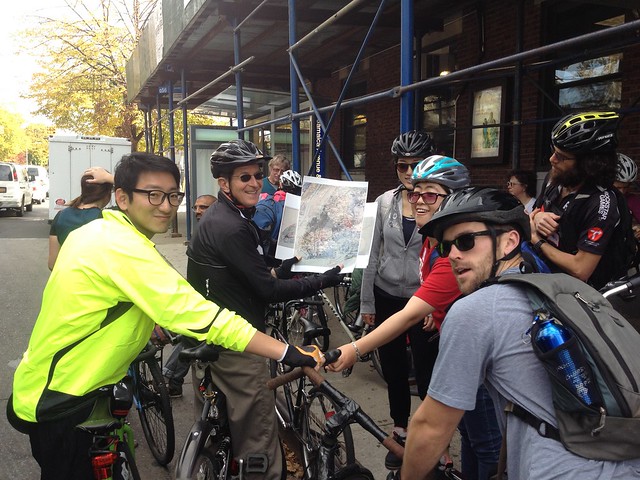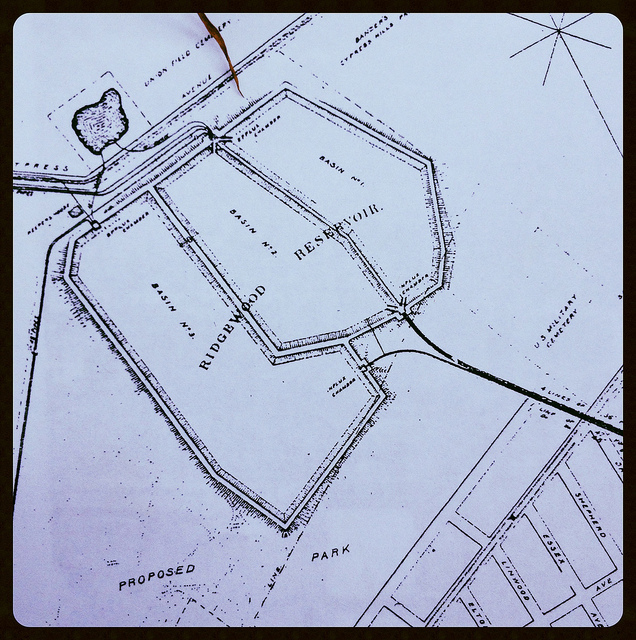
Left to right the AAP NYC crew- Moon, Bob, Jia, Sangni, and Ashton
Another Saturday, another spectacular opportunity to get out and see urbanity. On offer for the first Saturday of November was a biking tour of Brooklyn’s historic water infrastructure. Although it was a tour of Brooklyn’s infrastructure, the entirety of the tour occurred within the Borough of Queens.
Unlike other tours so far this term, this one was not guided by AAP NYC instead we tagged along with a nonprofit called NYC H2O. Going along with NYC H2O provided the opportunity to ride alongside passionate Brooklynites and gave us access to controlled entry areas of the former Ridgewood Reservoir.
View into former Ridgewood Reservoir bath.
Seeing Brooklyn’s 19th century infrastructure imparted a history of urban growth and spotlighted an epic but little known story of poor urban planning. An enormous amount of the then City of Brooklyn’s mid-19th century financial purse invested in what was ultimately a failed water distribution system. The financial strain of this failure and the need for clean water contributed to Brooklyn’s willingness to participate in the consolidation of great New York City in 1898.
To fully understand the problems with Brooklyn’s historic water supply, we followed its elevation contours for 18 miles. The ride started at the Jamaica, Queens, YMCA, where we met the tour guides Matt Malina of NYC H20 and Michael Miscione, Manhattan’s official Borough Historian. From our meeting point we first pedaled up to the highest elevation of the tour, the historic basins of the Ridgewood reservoir.
Sandborn map depicting the Ridgewood Reservoir basins. Located in the lower right hand corner of the map is the contemporary YMCA, just east of Shepherd St. on Jamaica Ave.
The three tubs seen in the above image were the final destination for a system of pipes, streams, and ponds stretching 25 miles east along Long Island. At the time of the water infrastructure’s construction Brooklyn was its own city. In mid-19th century dollars, the system cost the sizable sum of $20 million. But more significant than what it cost to build, annually at the time it cost $1 million to pump water from lower elevations up to the reservoir baths. This was considered an expensive sum for operation.
Over time, as the population in Queens County grew, in addition to the cost of pumping water to the reservoir, the source water gradually become more and more polluted. Only operating for 40 years, the Brooklyn waterworks system was decommissioned when Brooklyn gained access to Manhattan’s waterworks which drew water from the natural high elevations of the Catskills. The water from the Catskills was and continues to be one of the purest municipal water supplies in the country.

